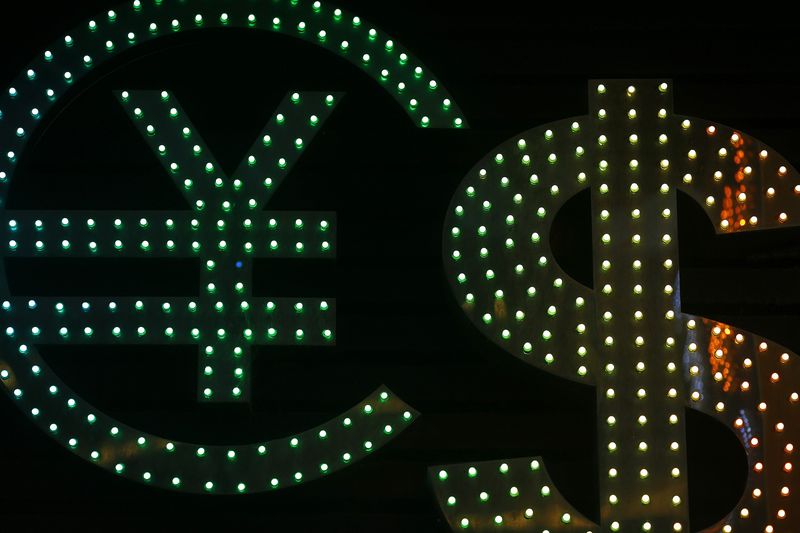* CPI inflation flat in Q2, core inflation well under forecasts
* A$ and yields dive as market rushes to price in rate cuts
* Speculation RBA could ease as early as May 7 meeting (Adds new rate cut predictions in Reuters poll, updates A$)
By Wayne Cole and Swati Pandey
SYDNEY, April 24 (Reuters) - Australian inflation slowed sharply last quarter to the lowest in three years on weak petrol prices and a stubborn lack of wage pressure, a disappointingly weak outcome that ticks one of the boxes for an interest rate cut perhaps as soon as May.
Just this month, the Reserve Bank of Australia (RBA) said that if inflation failed to accelerate as desired and unemployment were to suddenly trend higher, then rates would need to be cut from an already record low of 1.5 percent. data are all very weak and suggest a clear deceleration in inflation in early 2019 in a very disinflationary backdrop," said Su-Lin Ong, head of Australian fixed income strategy at RBC Capital Markets.
Ong is among 12 of 23 economists polled by Reuters who sees a rate cut at the RBA's next meeting on May 7. The median now points to rates at 1.00 percent by the end of this year, a sharp turnaround from no change in the previous poll in March. AU/INT
"Importantly, the inflation pulse is moving in the completely wrong direction to what the RBA has been forecasting and it strengthens the case for a rate cut."
While the labour market has stayed firm so far, inflation is not cooperating. The headline consumer price index (CPI) was unchanged in the March quarter, below forecasts for a 0.2 percent increase and the lowest since a negative reading in early 2016.
The annual CPI inflation braked to 1.3 percent in the March quarter, from 1.8 percent in the previous quarter, and was the lowest since the September quarter of 2016.
Key measures of underlying inflation favoured by the RBA averaged around 1.4 percent for the year, marking 13 quarters below the central bank's target range of 2 to 3 percent.
The last time inflation was this tepid in 2016, the RBA responded with two rate cuts - one in May and one in August.
Investors reacted by knocking the local dollar AUD=D3 down almost 1 percent to $0.7027, the lowest since March 11. Interest rate futures 0#YIB: sharply narrowed the odds on an easing, perhaps even as early as the RBA's next policy meeting on May 7.
Yields on three-year bonds AU3YT=RR dived to an all-time low of 1.25 percent, while Australia's main share index .AXJO surged to its best level in 11 years.
The probability of a May cut doubled to 44 percent and a quarter-point move was fully priced for July, compared with October earlier this week.
WHERE ARE WAGES?
The main drags on inflation in the March quarter were lower petrol prices, domestic and international holidays, travel and accommodation. Petrol has since turned around markedly and will likely lift inflation this quarter.
Price increases were seen for food, partly due to a drought, education, health and motor vehicles.
Sub-optimal inflation is hardly confined to Australia, with economists blaming everything from globalisation, to the rise of China, the decline of unions and the concentration of market power among an ever-smaller group of giant corporations.
It can also become self-fulfilling by pulling down expectations of future inflation. Companies become reluctant to raise prices for fear of losing to the competition, while workers become resigned to miserly wage gains.
The paucity of pay growth has become a particular concern for policymakers, with annual wages crawling along at 2.3 percent in Australia even as unemployment fell to a decade-low of 5.0 percent.
"Today's data suggests that core inflation will undershoot the RBA's projection of 1.75 percent in the June quarter, which will increase the pressure on the Board to cut the cash rate," said Sarah Hunter, chief economist for BIS Oxford Economics.
"For now at least, the disconnect between employment growth and wage increases is continuing."
The dichotomy is also dominating the Federal election campaign with the opposition Labor Party campaigning on government-driven ways to boost wages, while the ruling Coalition sticks with laissez-faire policies.
A vote is due on May 18 and, so far, Labor leads in the polls.
(Editing by Simon Cameron-Moore and Jacqueline Wong)
